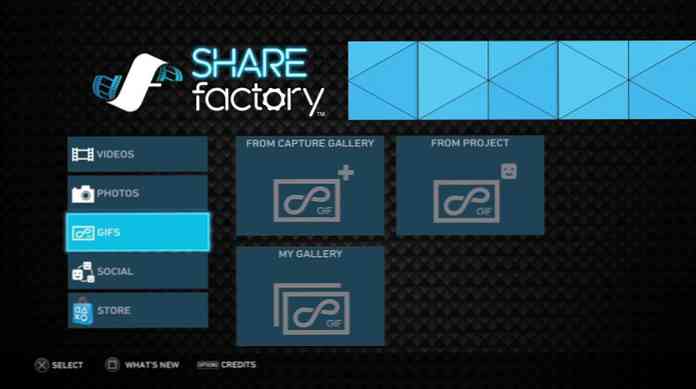Jak utworzyć logo Gmail za pomocą CSS3
Kilka miesięcy temu pokazałem Ci, jak stworzyć logo kanału RSS za pomocą CSS3. Pomyślałem, że fajnie byłoby stworzyć coś bardziej skomplikowanego. W dzisiejszym poście pokażę Ci, jak utworzyć nie jedną, ale dwie odmiany logo Gmail przy użyciu tylko CSS3.
Skróty do:
- Gmail logo CSS tutorial # 1 | Zapowiedź
- Samouczek Gmail logo CSS # 2 | Zapowiedź
Logo Gmail # 1
To pierwsze logo jest proste i dość łatwe do utworzenia. Bez dalszych ceregieli, oto kroki. Zacznijmy od rozpalenia ulubionego edytora kodu i wprowadzenia następujących kodów HTML, i zapiszmy go jako logo-gmail.html.
Logo CSS Gmaila
Dodaj następujące style CSS między zresetować domyślne wartości CSS.
.logo gmail, .gmail-logo *, .gmail-logo *: przed, .gmail-logo *: after margin: 0; dopełnienie: 0; tło: przezroczyste; granica: 0; zarys: 0; Blok wyświetlacza; czcionka: normalna normalna 0/0 szeryfowa;
Poniższe kody CSS dają nam czerwone tło logo Gmaila i zaokrąglone boki.
.gmail-logo margin: 110px auto; tło: rgb (201, 44, 25); szerokość: 600px; wysokość: 400px; border-top: 4px stałe rgb (201, 44, 25); border-bottom: 4px stałe rgb (201, 44, 25); border-radius: 10px; -moz-border-radius: 10px; -webkit-border-radius: 10px;
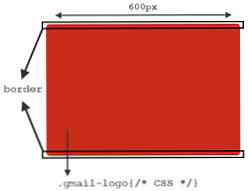
Następnie kontynuujemy tworzenie białego pola na czerwonym tle.
.gmail-logo .gmail-box overflow: hidden; float: left; szerokość: 440px; wysokość: 400px; margin: 0 0 0 80px; tło: biały; border-radius: 5px; -moz-border-radius: 5px; -webkit-border-radius: 5px;
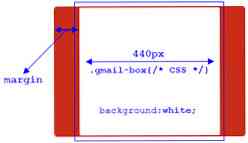
Aby utworzyć czerwony efekt „M”, najpierw utworzymy pudełko z czerwoną ramką.
.gmail-logo .gmail-box: przed position: relative; zawartość: "; z-index: 1; background: white; float: left; width: 320px; height: 320px; border: 100px solid rgb (201, 44, 25); margin: -310px 0 0 -40px; border- promień: 10px; -moz-border-radius: 10px; -webkit-border-radius: 10px; -moz-transform: rotate (45deg); -webkit-transform: rotate (45deg); -o-transform: rotate (45deg) );
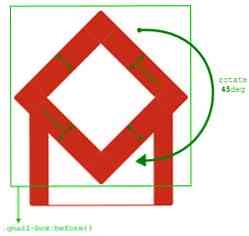
Następnie kontynuujemy ukrywanie nadmiernych boków, dając nam kompletny „M” w kolorze czerwonym.
.gmail-logo .gmail-box overflow: hidden;
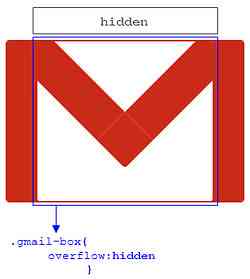
Teraz dajmy dwie cienkie czerwone obramowanie, nadając mu wygląd koperty.
.gmail-logo .gmail-box: after content: "; float: left; width: 360px; height: 360px; border: 2px solid rgb (201, 44, 25); margin: 10px 0 0 40px; -o-transform : rotate (45deg); -webkit-transform: rotate (45deg); -moz-transform: rotate (45deg);
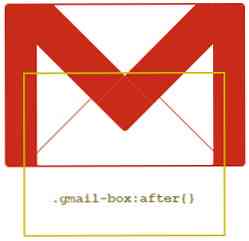
Prawie skończyliśmy. Dodajmy gradient do czerwonej koperty.
.gmail-logo: after content: "; position: relative; z-index: 2; content:"; float: left; margines: -404px; szerokość: 600px; wysokość: 408px; Blok wyświetlacza; tło: -moz-linear-gradient (góra, rgba (255, 255, 255, 0,3) 0%, / * rgba (255, 255, 255, 0,3) 30%, * / rgba (255, 255, 255, 0,1 ) 100%); tło: -o-liniowy gradient (góra, rgba (255, 255, 255, 0,3) 0%, / * rgba (255, 255, 255, 0,2) 30%, * / rgba (255, 255, 255, 0,1 ) 100%); background: -webkit-gradient (liniowy, lewy górny, lewy dolny, zatrzymanie koloru (0%, rgba (255, 255, 255, 0,3)), / * zatrzymanie koloru (30%, rgba (255, 255, 255 , 0,2)), * / zatrzymanie koloru (100%, rgba (255, 255, 255, 0,1)));
Na koniec nadajmy mu inny kolor po uniesieniu. Dodaj następujący kod HTML DOCTYPE wcześniej
I następujące style CSS wcześniej
.gmail-logo: hover background: # 313131; border-color: # 313131; / * kursor: wskaźnik; * / .gmail-logo: hover .gmail-box: before border-color: # 313131; .gmail-logo: hover .gmail-box: after border-color: # 313131; border-bottom-color: #fff; border-right-color: #fff;
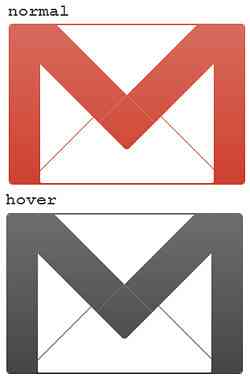
Podgląd | Pobierz plik źródłowy
Logo Gmail # 2
Następnie utworzymy logo Gmail z innej perspektywy z niewielkim efektem 3D. Zaczniemy od podstawowego znacznika HTML.
Logo Gmail 2
Ponieważ logo ma inną perspektywę, zaczniemy od obrócenia go trochę i stworzenia potrzebnych warstw (które nazwiemy je elementy) kolejno.
# gmail-logo2 margin: 0 auto; Blok wyświetlacza; szerokość: 380px; wysokość: 290px; -moz-transform: rotate (6deg); -webkit-transform: rotate (6deg); -o-transform: rotate (6deg); transform: rotate (6deg); # gmail-logo2 .element1 display: block; szerokość: 380px; wysokość: 290px; # gmail-logo2 .element2, # gmail-logo2 .element3, # gmail-logo2 .element4, # gmail-logo2 .element5 float: left; Blok wyświetlacza; szerokość: 380px; wysokość: 290px; margines: -290px 0 0 0;
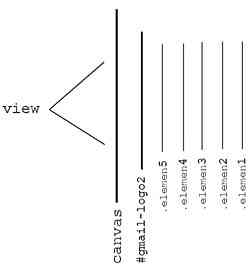
Stylizacja .element1 :: wcześniej
# gmail-logo2 .element1 :: before content: "; position: relative; margin: 2px 0 0 14px; float: left; display: block; background: rgb (201, 44, 25); width: 30px; height: 276px; -moz-transform: rotate (3deg); -webkit-transform: rotate (3deg); -o-transform: rotate (3deg); transform: rotate (3deg); border-radius: 22px 0 0 20px; -moz -border-radius: 22px 0 0 20px; -webkit-border-radius: 22px 0 0 20px; box-shadow: -1px 1px 0 rgb (109, 10, 0), -2px 2px 0 rgb (109, 10, 0 ), -3px 3px 0 rgb (109, 10, 0), -4px 4px 0 rgb (109, 10, 0), -5px 5px 0 rgb (109, 10, 0), -6px 6px 0 rgb (109, 10 , 0); -webkit-box-shadow: -1px 1px 0 rgb (109, 10, 0), -2px 2px 0 rgb (109, 10, 0), -3px 3px 0 rgb (109, 10, 0), -4px 4px 0 rgb (109, 10, 0), -5px 5px 0 rgb (109, 10, 0), -6px 6px 0 rgb (109, 10, 0); -moz-box-shadow: -1px 1px 0 rgb (109, 10, 0), -2px 2px 0 rgb (109, 10, 0), -3px 3px 0 rgb (109, 10, 0), -4px 4px 0 rgb (109, 10, 0), -5px 5px 0 rgb (109, 10, 0), -6px 6px 0 rgb (109, 10, 0);
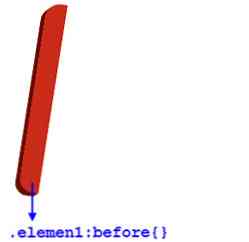
Stylizacja .element1 :: po
# gmail-logo2 .element1 :: after content: "; position: relative; margin: 40px 5px 0 0; float: right; display: block; background: rgb (201, 44, 25); width: 30px; height: 238px; -moz-transform: rotate (3deg); -webkit-transform: rotate (3deg); -o-transform: rotate (3deg); transform: rotate (3deg); border-radius: 0 18px 26px 0; -webkit -border-radius: 0 18px 26px 0; -moz-border-radius: 0 18px 26px 0; box-shadow: -1px 1px 0 rgb (109, 10, 0), -2px 2px 0 rgb (109, 10, 0 ), -3px 3px 0 rgb (109, 10, 0), -4px 4px 0 rgb (109, 10, 0), -5px 5px 0 rgb (109, 10, 0), -6px 6px 0 rgb (109, 10 , 0), -6px 7px 0 rgb (109, 10, 0); -moz-box-shadow: -1px 1px 0 rgb (109, 10, 0), -2px 2px 0 rgb (109, 10, 0), -3px 3px 0 rgb (109, 10, 0), -4px 4px 0 rgb (109, 10, 0), -5px 5px 0 rgb (109, 10, 0), -6px 6px 0 rgb (109, 10, 0 ), -6px 7px 0 rgb (109, 10, 0); -webkit-box-shadow: -1px 1px 0 rgb (109, 10, 0), -2px 2px 0 rgb (109, 10, 0), -3px 3px 0 rgb (109, 10, 0), -4px 4px 0 rgb (109, 10, 0), -5px 5px 0 rgb (109, 10, 0), -6px 6px 0 rgb (109, 10, 0), -6px 7px 0 rg b (109, 10, 0);
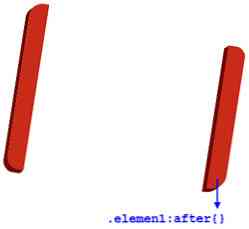
Stylizacja .element2 :: wcześniej
# gmail-logo2 .element2 :: before content: "; margin: 22px 0 0 48px; float: left; display: block; background: rgb (201, 44, 25); width: 315px; height: 14px; -moz -transform: rotate (6.8deg); -webkit-transform: rotate (6.8deg); -o-transform: rotate (6.8deg); transform: rotate (6.8deg); box-shadow: 0 1px 0 rgb (109, 10, 0), 0 2px 0 rgb (109, 10, 0), 0 3px 0 rgb (109, 10, 0), 0 4px 0 rgb (109, 10, 0), 0 5px 0 rgb (109, 10, 0), -6px 6px 0 rgb (109, 10, 0); -webkit-box-shadow: 0 1px 0 rgb (109, 10, 0), 0 2px 0 rgb (109, 10, 0), 0 3px 0 rgb (109, 10, 0), 0 4px 0 rgb (109, 10, 0), 0 5px 0 rgb (109, 10, 0), -6px 6px 0 rgb (109, 10, 0); -moz-box -shadow: 0 1px 0 rgb (109, 10, 0), 0 2px 0 rgb (109, 10, 0), 0 3px 0 rgb (109, 10, 0), 0 4px 0 rgb (109, 10, 0) , 0 5px 0 rgb (109, 10, 0), -6px 6px 0 rgb (109, 10, 0);
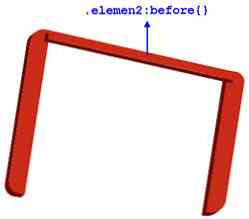
Stylizacja .element2 :: po
# gmail-logo2 .element2 :: after content: "; position: relative; margin: 230px 0 0 36px; float: left; display: block; background: rgb (201, 44, 25); width: 310px; height: 12px; box-shadow: 0 1px 0 rgb (109, 10, 0), 0 2px 0 rgb (109, 10, 0), 0 3px 0 rgb (109, 10, 0), 0 4px 0 rgb (109, 10 , 0), 0 5px 0 rgb (109, 10, 0), -6px 6px 0 rgb (109, 10, 0); -webkit-box-shadow: 0 1px 0 rgb (109, 10, 0), 0 2px 0 rgb (109, 10, 0), 0 3px 0 rgb (109, 10, 0), 0 4px 0 rgb (109, 10, 0), 0 5px 0 rgb (109, 10, 0), -6px 6px 0 rgb (109, 10, 0); -moz-box-shadow: 0 1px 0 rgb (109, 10, 0), 0 2px 0 rgb (109, 10, 0), 0 3px 0 rgb (109, 10, 0 ), 0 4px 0 rgb (109, 10, 0), 0 5px 0 rgb (109, 10, 0), -6px 6px 0 rgb (109, 10, 0);
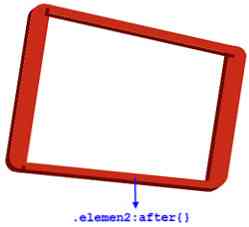
Stylizacja .element3 :: wcześniej
# gmail-logo2 .element3 :: before content: "; position: relative; margin: 8px 0 0 42px; float: left; display: block; background: rgb (201, 44, 25); width: 42px; height: 268px; -moz-transform: rotate (3deg); -webkit-transform: rotate (3deg); -o-transform: rotate (3deg); transform: rotate (3deg);
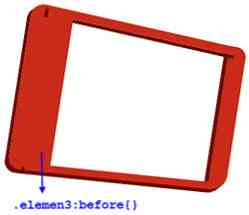
Stylizacja .element3 :: po
# gmail-logo2 .element3 :: after content: "; position: relative; margin: 40px 32px 0 0; float: right; display: block; background: rgb (201, 44, 25); width: 22px; height: 236px; -moz-transform: rotate (3.0deg); -webkit-transform: rotate (3.0deg); -o-transform: rotate (3.0deg); transform: rotate (3.0deg); box-shadow: 0 1px 0 rgb (109, 10, 0), 0 2px 0 rgb (109, 10, 0), 0 3px 0 rgb (109, 10, 0), 0 4px 0 rgb (109, 10, 0), 0 5px 0 rgb ( 109, 10, 0), -6px 6px 0 rgb (109, 10, 0); -webkit-box-shadow: 0 1px 0 rgb (109, 10, 0), 0 2px 0 rgb (109, 10, 0) , 0 3px 0 rgb (109, 10, 0), 0 4px 0 rgb (109, 10, 0), 0 5px 0 rgb (109, 10, 0), -6px 6px 0 rgb (109, 10, 0); -moz-box-shadow: 0 1px 0 rgb (109, 10, 0), 0 2px 0 rgb (109, 10, 0), 0 3px 0 rgb (109, 10, 0), 0 4px 0 rgb (109, 10, 0), 0 5px 0 rgb (109, 10, 0), -6px 6px 0 rgb (109, 10, 0);
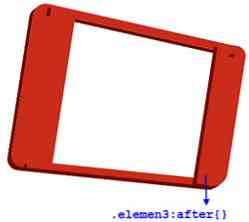
Stylizacja .element4 :: wcześniej
# gmail-logo2 .element4 :: before content: "; position: relative; margin: -2px 0 0 130px; float: left; display: block; background: rgb (201, 44, 25); width: 54px; height : 192px; -moz-transform: rotate (-49deg); -webkit-transform: rotate (-49deg); -o-transform: rotate (-49deg); transform: rotate (-49deg); box-shadow: -1px 0 0 rgb (109, 10, 0), -2px 0 0 rgb (109, 10, 0), -3px 0 0 rgb (109, 10, 0), -4px 0 0 rgb (109, 10, 0), -5px 0 0 rgb (109, 10, 0), -6px 0 0 rgb (109, 10, 0), -7px 0 0 rgb (109, 10, 0), -8px 0 0 rgb (109, 10, 0 ); -moz-box-shadow: -1px 0 0 rgb (109, 10, 0), -2px 0 0 rgb (109, 10, 0), -3px 0 0 rgb (109, 10, 0), -4px 0 0 rgb (109, 10, 0), -5px 0 0 rgb (109, 10, 0), -6px 0 0 rgb (109, 10, 0), -7px 0 0 rgb (109, 10, 0), -8px 0 0 rgb (109, 10, 0); -webkit-box-shadow: -1px 0 0 rgb (109, 10, 0), -2px 0 0 rgb (109, 10, 0), -3px 0 0 rgb (109, 10, 0), -4px 0 0 rgb (109, 10, 0), -5px 0 0 rgb (109, 10, 0), -6px 0 0 rgb (109, 10, 0), -7px 0 0 rgb (109, 10, 0), -8px 0 0 rgb (109, 10, 0);
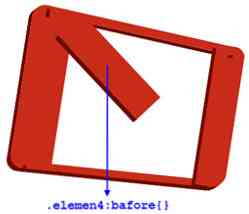
Stylizacja .element4 :: po
# gmail-logo2 .element4 :: after content: "; position: relative; margin: 12px 88px 0 0; float: right; display: block; background: rgb (201, 44, 25); width: 54px; height: 186px; border-radius: 30px 0 0 0; -webkit-border-radius: 30px 0 0 0; -moz-border-radius: 30px 0 0 0; -moz-transform: rotate (53deg); -webkit-transform: rotate (53deg); -o-transform: rotate (53deg); transform: rotate (53deg);
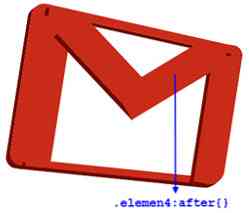
Stylizacja .element5 :: wcześniej
# gmail-logo2 .element5 :: before content: "; position: relative; margin: 115px 0 0 125px; float: left; display: block; background: rgb (201, 44, 25); width: 2px; height: 150px; -moz-transform: rotate (55deg); -o-transform: rotate (55deg); -webkit-transform: rotate (55deg); transform: rotate (55deg);
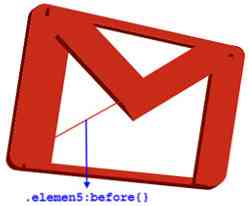
Stylizacja .element5 :: po
# gmail-logo2 .element5 :: after position: relative; content: "; margin: 115px 0 0 150px; float: left; display: block; background: rgb (201, 44, 25); width: 2px; height: 150px; -moz-transform: rotate (-50deg); webkit-transform: rotate (-50deg); -o-transform: rotate (-50deg); transform: rotate (-50deg);
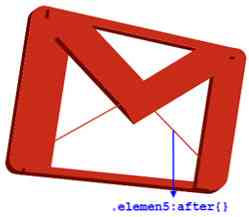
Dostosowywanie priorytetu indeks Z.
# gmail-logo2 .element1 :: przed z-index: 3; # gmail-logo2 .element1 :: po z-index: 1; / * # gmail-logo2 .element2 :: przed * / # gmail-logo2 .element2 :: po z-index: 2; # gmail-logo2 .element3 :: przed z-index: 5; # gmail-logo2 .element3 :: po z-index: 1; # gmail-logo2 .element4 :: przed z-index: 4; # gmail-logo2 .element4 :: po z-index: 3; / * # gmail-logo2 .element5 :: przed # gmail- logo2 .element5 :: after * /

Prawie skończyliśmy. Twoje logo Gmail powinno wyglądać mniej więcej tak:

Na koniec nadajmy mu inny kolor po zawisie.
# gmail-logo2: hover * :: after, # gmail-logo2: hover * :: before background: rgba (20, 196, 7, 1); # gmail-logo2: hover .element1 :: before box-shadow: -1px 1px 0 rgb (10, 90, 4), -2px 2px 0 rgb (10, 90, 4), -3px 3px 0 rgb (10 , 90, 4), -4px 4px 0 rgb (10, 90, 4), -5px 5px 0 rgb (10, 90, 4), -6px 6px 0 rgb (10, 90, 4); -webkit-box-shadow: -1px 1px 0 rgb (10, 90, 4), -2px 2px 0 rgb (10, 90, 4), -3px 3px 0 rgb (10, 90, 4), -4px 4px 0 rgb (10, 90, 4), -5px 5px 0 rgb (10, 90, 4), -6px 6px 0 rgb (10, 90, 4); -moz-box-shadow: -1px 1px 0 rgb (10, 90, 4), -2px 2px 0 rgb (10, 90, 4), -3px 3px 0 rgb (10, 90, 4), -4px 4px 0 rgb (10, 90, 4), -5px 5px 0 rgb (10, 90, 4), -6px 6px 0 rgb (10, 90, 4); # gmail-logo2: hover .element1 :: after box-shadow: -1px 1px 0 rgb (10, 90, 4), -2px 2px 0 rgb (10, 90, 4), -3px 3px 0 rgb (10 , 90, 4), -4px 4px 0 rgb (10, 90, 4), -5px 5px 0 rgb (10, 90, 4), -6px 6px 0 rgb (10, 90, 4), -6px 7px 0 rgb (10, 90, 4); -moz-box-shadow: -1px 1px 0 rgb (10, 90, 4), -2px 2px 0 rgb (10, 90, 4), -3px 3px 0 rgb (10, 90, 4), -4px 4px 0 rgb (10, 90, 4), -5px 5px 0 rgb (10, 90, 4), -6px 6px 0 rgb (10, 90, 4), -6px 7px 0 rgb (10, 90, 4); -webkit-box-shadow: -1px 1px 0 rgb (10, 90, 4), -2px 2px 0 rgb (10, 90, 4), -3px 3px 0 rgb (10, 90, 4), -4px 4px 0 rgb (10, 90, 4), -5px 5px 0 rgb (10, 90, 4), -6px 6px 0 rgb (10, 90, 4), -6px 7px 0 rgb (10, 90, 4); # gmail-logo2: hover .element2 :: before box-shadow: 0 1px 0 rgb (10, 90, 4), 0 2px 0 rgb (10, 90, 4), 0 3px 0 rgb (10, 90, 4), 0 4px 0 rgb (10, 90, 4), 0 5px 0 rgb (10, 90, 4), -6px 6px 0 rgb (10, 90, 4); -webkit-box-shadow: 0 1px 0 rgb (10, 90, 4), 0 2px 0 rgb (10, 90, 4), 0 3px 0 rgb (10, 90, 4), 0 4px 0 rgb (10, 90, 4), 0 5px 0 rgb (10, 90, 4), -6px 6px 0 rgb (10, 90, 4); -moz-box-shadow: 0 1px 0 rgb (10, 90, 4), 0 2px 0 rgb (10, 90, 4), 0 3px 0 rgb (10, 90, 4), 0 4px 0 rgb (10, 90, 4), 0 5px 0 rgb (10, 90, 4), -6px 6px 0 rgb (10, 90, 4); # gmail-logo2: hover .element2 :: after box-shadow: 0 1px 0 rgb (10, 90, 4), 0 2px 0 rgb (10, 90, 4), 0 3px 0 rgb (10, 90, 4), 0 4px 0 rgb (10, 90, 4), 0 5px 0 rgb (10, 90, 4), -6px 6px 0 rgb (10, 90, 4); -webkit-box-shadow: 0 1px 0 rgb (10, 90, 4), 0 2px 0 rgb (10, 90, 4), 0 3px 0 rgb (10, 90, 4), 0 4px 0 rgb (10, 90, 4), 0 5px 0 rgb (10, 90, 4), -6px 6px 0 rgb (10, 90, 4); -moz-box-shadow: 0 1px 0 rgb (10, 90, 4), 0 2px 0 rgb (10, 90, 4), 0 3px 0 rgb (10, 90, 4), 0 4px 0 rgb (10, 90, 4), 0 5px 0 rgb (10, 90, 4), -6px 6px 0 rgb (10, 90, 4); # gmail-logo2: hover .element3 :: after box-shadow: 0 1px 0 rgb (10, 90, 4), 0 2px 0 rgb (10, 90, 4), 0 3px 0 rgb (10, 90, 4), 0 4px 0 rgb (10, 90, 4), 0 5px 0 rgb (10, 90, 4), -6px 6px 0 rgb (10, 90, 4); -webkit-box-shadow: 0 1px 0 rgb (10, 90, 4), 0 2px 0 rgb (10, 90, 4), 0 3px 0 rgb (10, 90, 4), 0 4px 0 rgb (10, 90, 4), 0 5px 0 rgb (10, 90, 4), -6px 6px 0 rgb (10, 90, 4); -moz-box-shadow: 0 1px 0 rgb (10, 90, 4), 0 2px 0 rgb (10, 90, 4), 0 3px 0 rgb (10, 90, 4), 0 4px 0 rgb (10, 90, 4), 0 5px 0 rgb (10, 90, 4), -6px 6px 0 rgb (10, 90, 4); # gmail-logo2: hover .element4 :: before box-shadow: -1px 0 0 rgb (10, 90, 4), -2px 0 0 rgb (10, 90, 4), -3px 0 0 rgb (10 , 90, 4), -4px 0 0 rgb (10, 90, 4), -5px 0 0 rgb (10, 90, 4), -6px 0 0 rgb (10, 90, 4), -7px 0 0 rgb (10, 90, 4), -8px 0 0 rgb (10, 90, 4); -moz-box-shadow: -1px 0 0 rgb (10, 90, 4), -2px 0 0 rgb (10, 90, 4), -3px 0 0 rgb (10, 90, 4), -4px 0 0 rgb (10, 90, 4), -5px 0 0 rgb (10, 90, 4), -6px 0 0 rgb (10, 90, 4), -7px 0 0 rgb (10, 90, 4), -8px 0 0 rgb (10, 90, 4); -webkit-box-shadow: -1px 0 0 rgb (10, 90, 4), -2px 0 0 rgb (10, 90, 4), -3px 0 0 rgb (10, 90, 4), -4px 0 0 rgb (10, 90, 4), -5px 0 0 rgb (10, 90, 4), -6px 0 0 rgb (10, 90, 4), -7px 0 0 rgb (10, 90, 4), -8px 0 0 rgb (10, 90, 4);
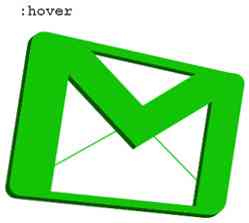
Podgląd | Pobierz plik źródłowy
Nota redaktora: Ten wpis jest napisany przez Irham Kendeni dla Hongkiat.com. Irham, znany również jako Indaam, jest projektantem stron internetowych i deweloperem z Indonezji. Uwielbia także tworzenie motywów CSS i WordPress.




